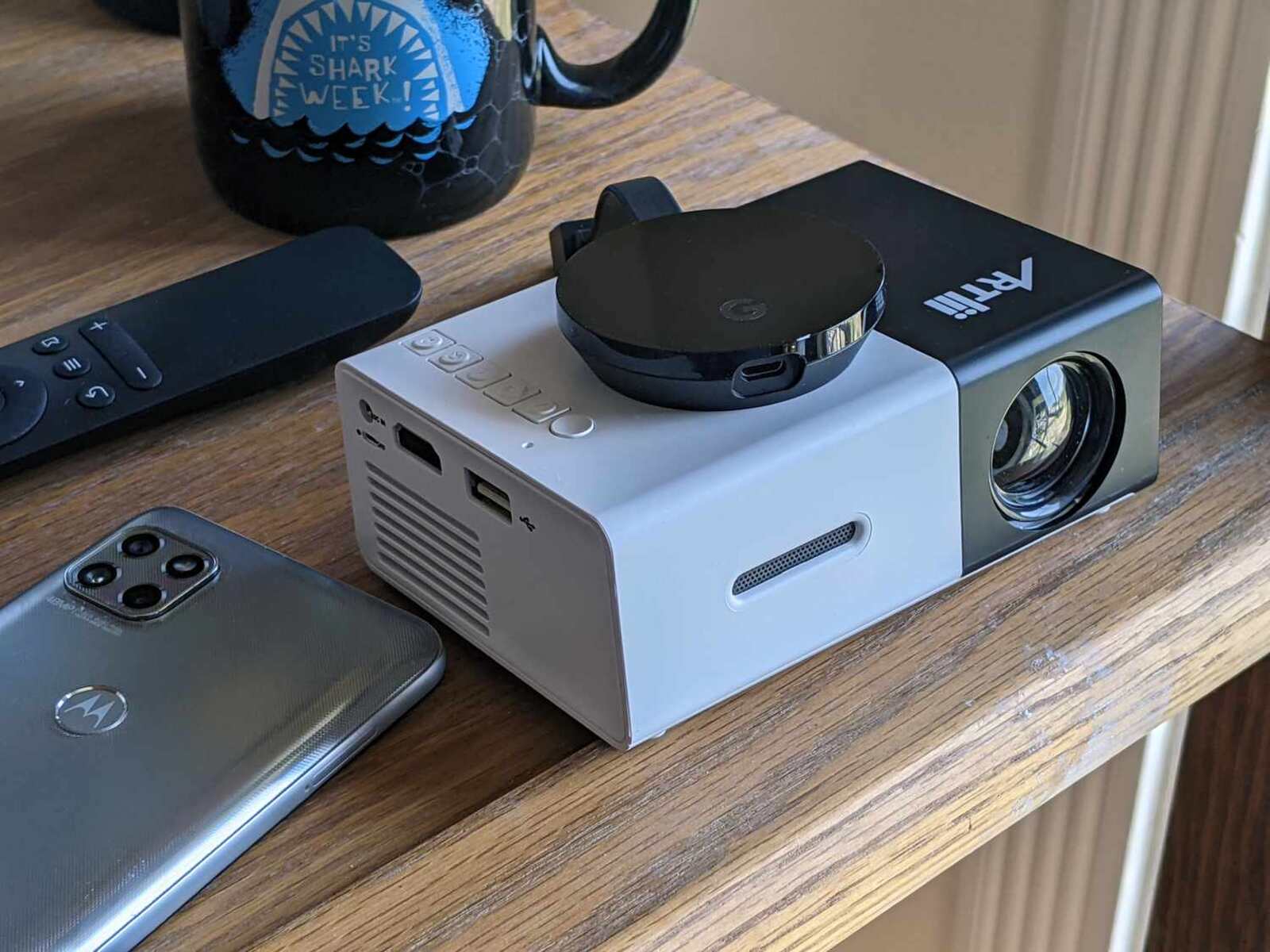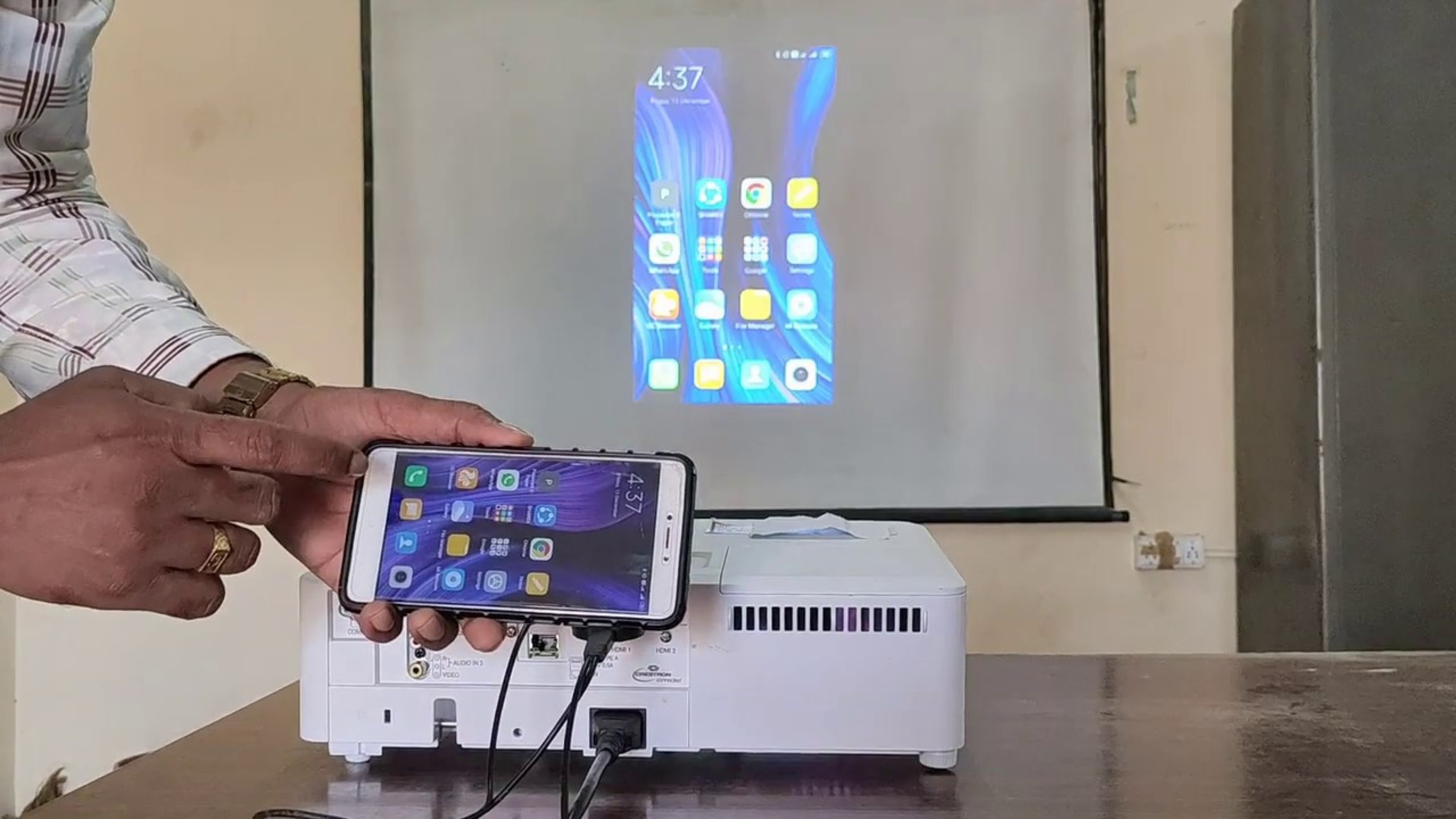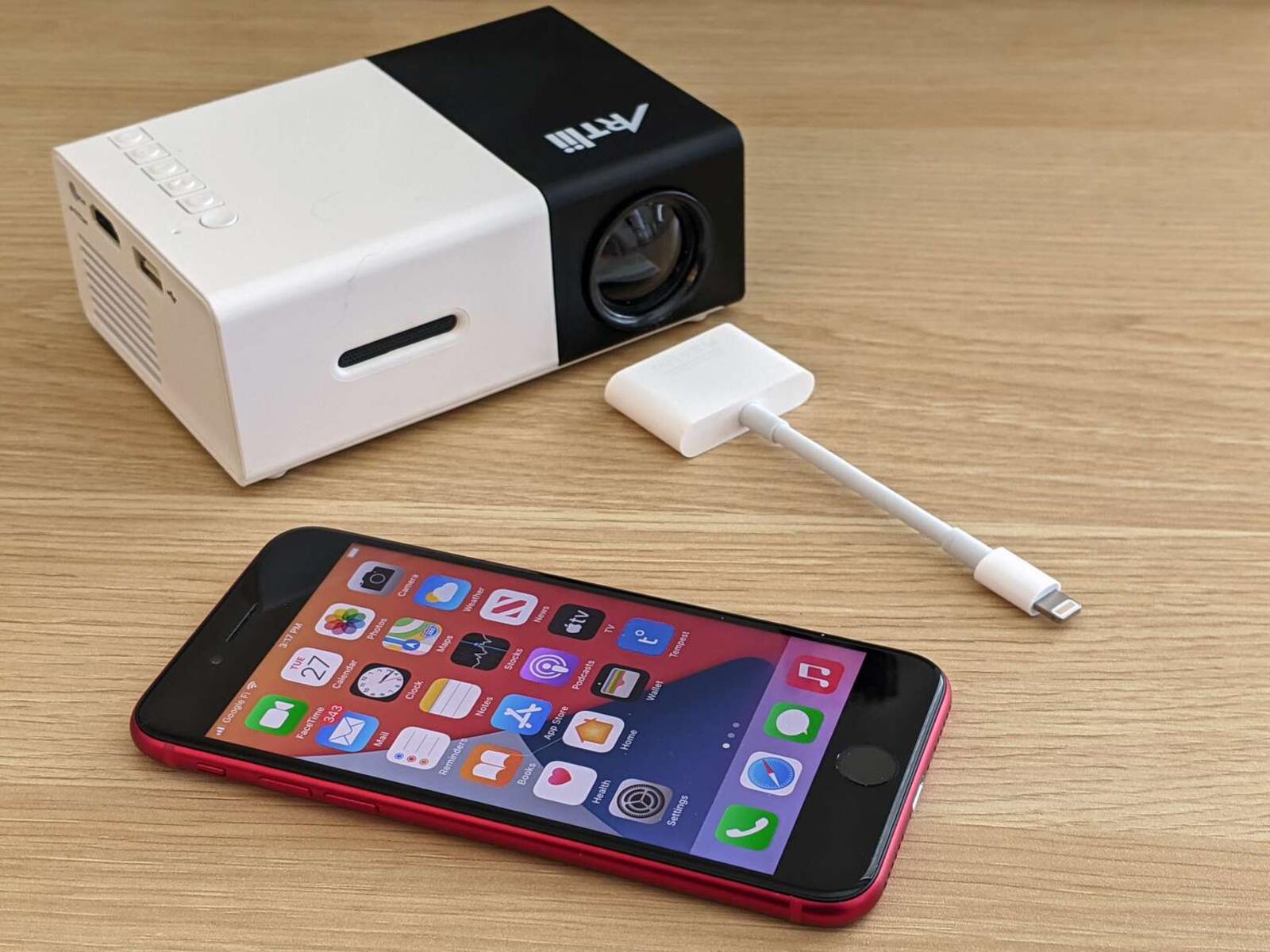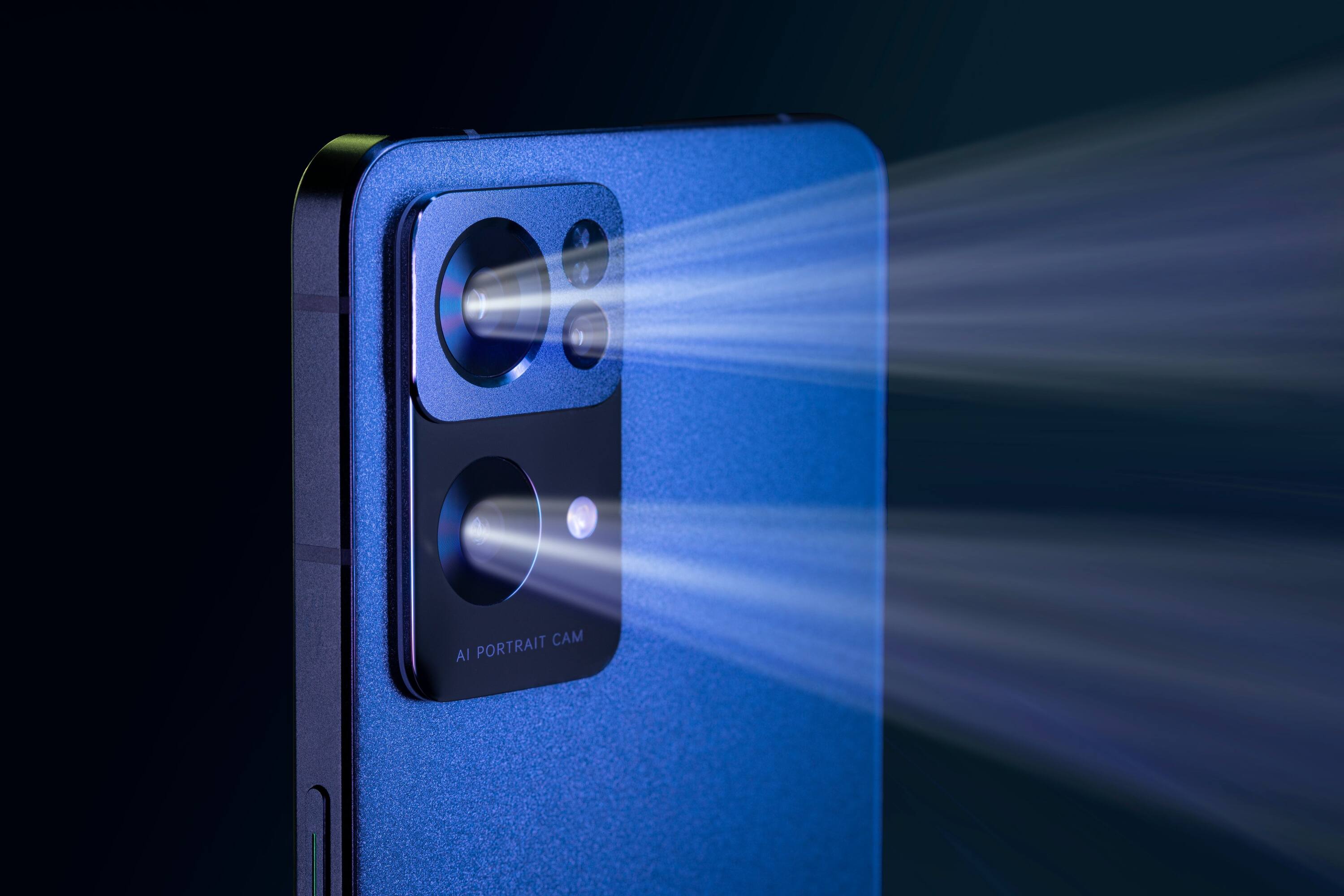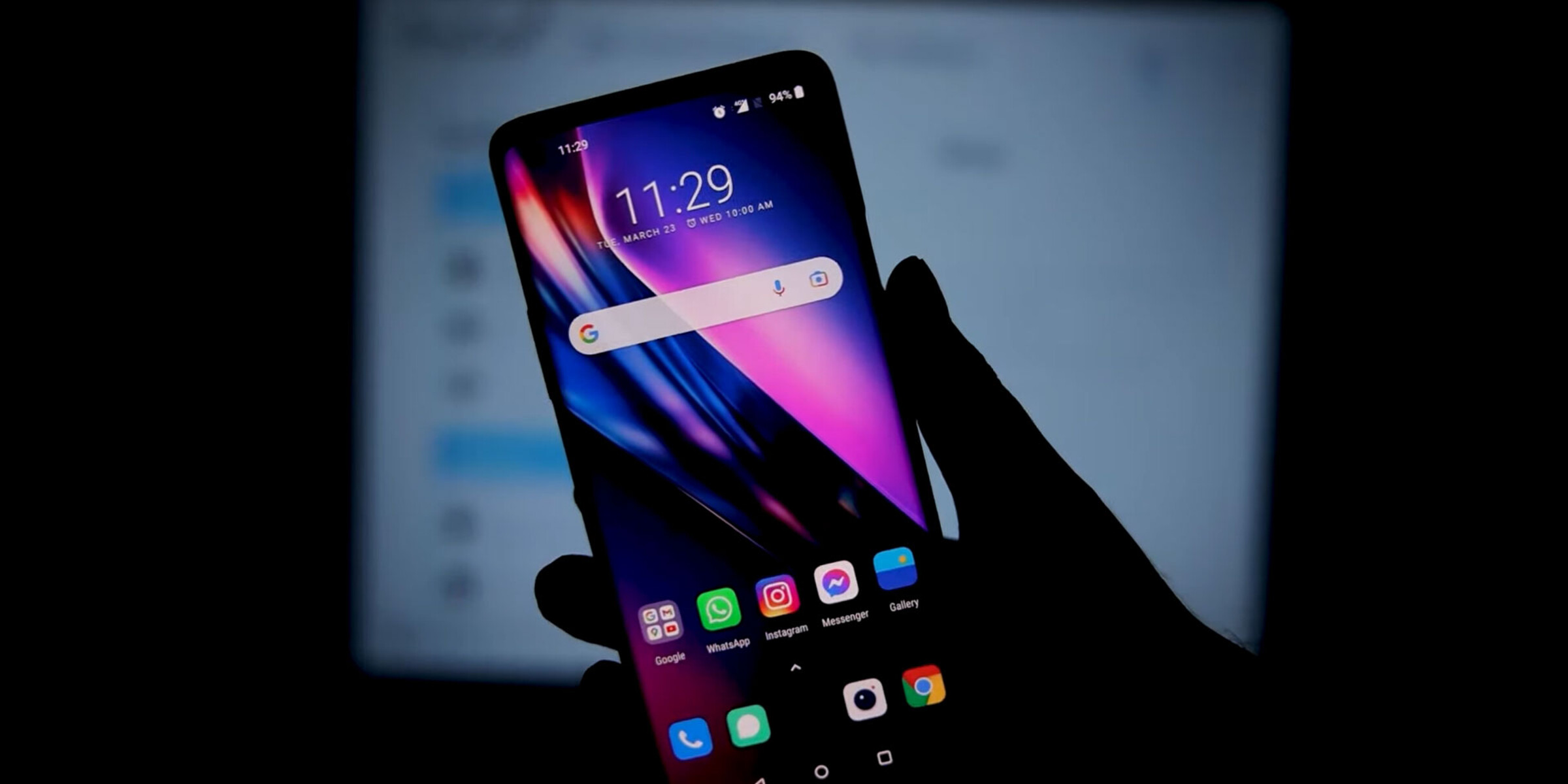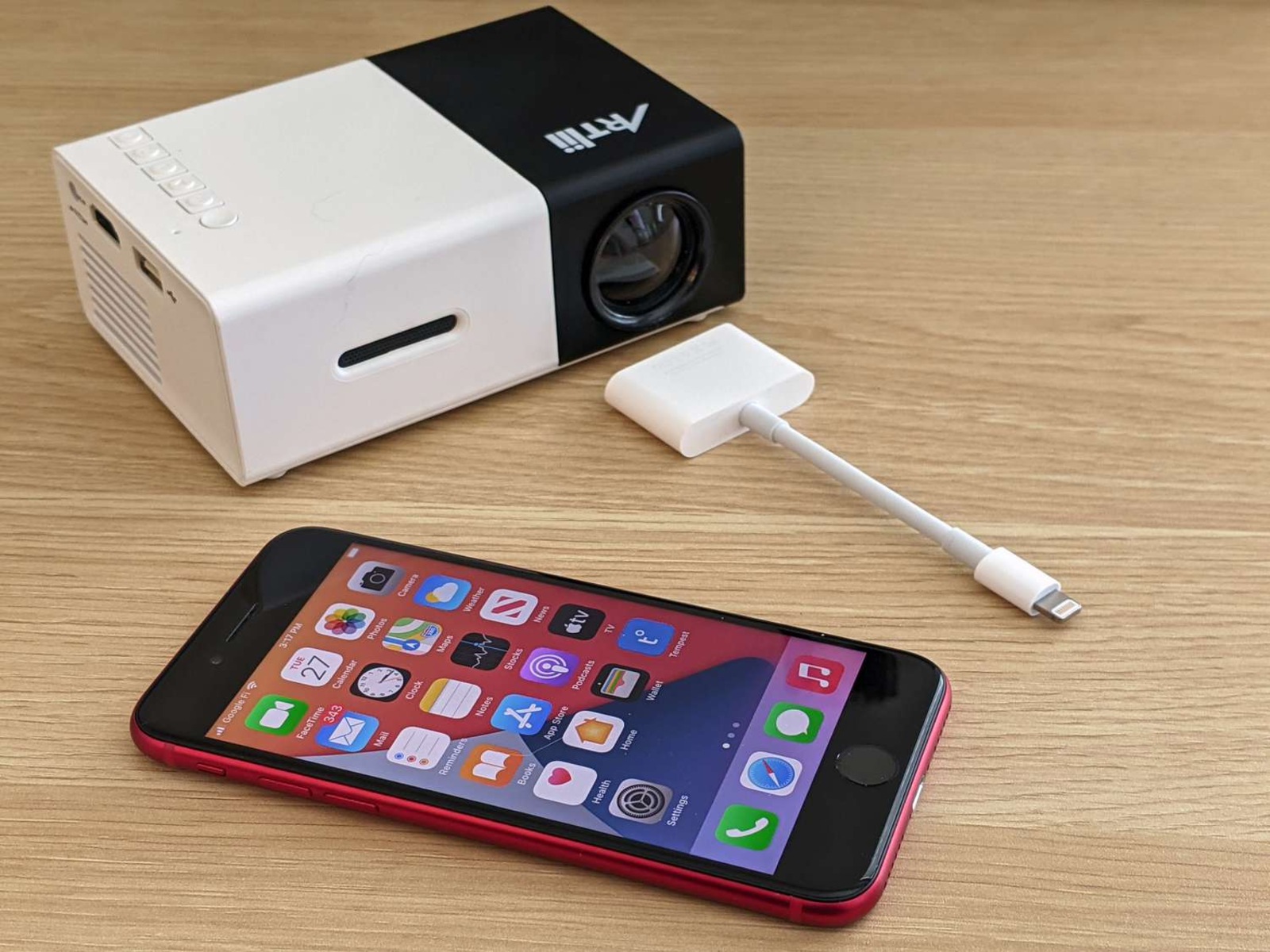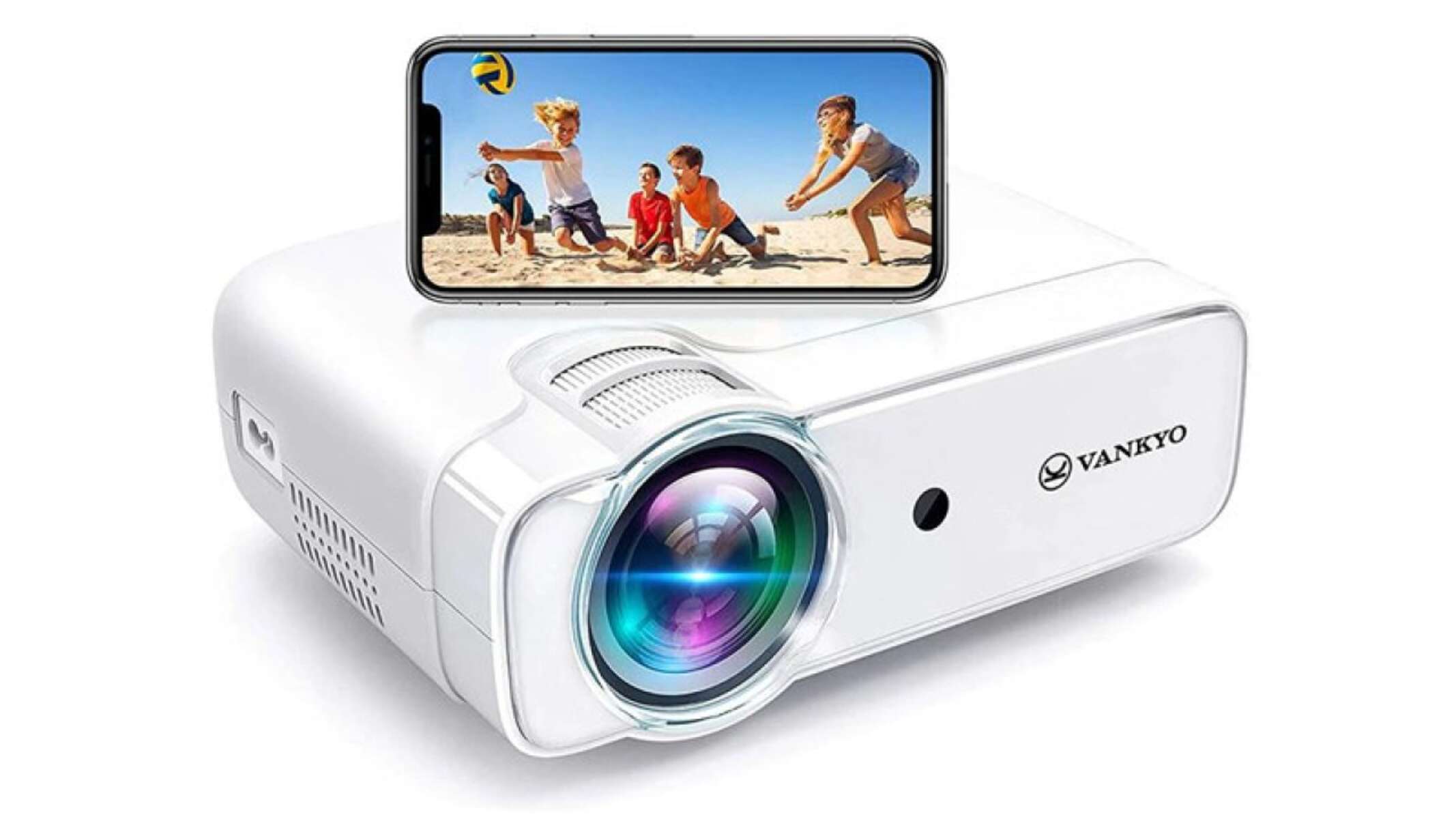Introduction
Connecting your projector to your phone opens up a world of possibilities, allowing you to easily showcase photos, videos, presentations, and more on a larger screen. Whether you are giving a presentation at work, enjoying a movie night with friends, or sharing memories with your family, having the ability to connect your phone to a projector can greatly enhance your multimedia experience.
There are several options available to connect your phone to a projector, and in this article, we will explore some of the most popular ones. Whether you prefer a wired connection for a seamless audio and video transmission or a wireless option for added convenience and flexibility, we have you covered. So, let’s dive in and discover the various ways to connect your projector to your phone!
When choosing the right method to connect your projector to your phone, consider factors such as the type of projector and phone you have, the available ports and connectivity options, and your specific needs and preferences. Some methods may require additional accessories, while others may be built-in features of your devices.
Keep in mind that these methods are intended for modern smartphones and projectors. Older devices may have limited connectivity options or may not be compatible with certain methods. It is always a good idea to check the user manuals or specifications of your devices to ensure compatibility before attempting to connect them.
Now, let’s explore the different options available to connect your projector to your phone!
Option 1: Connecting through HDMI cable
One of the most popular and straightforward methods to connect your phone to a projector is by using an HDMI cable. HDMI (High-Definition Multimedia Interface) cables are capable of transmitting high-quality audio and video signals, making them an ideal choice for a seamless projection experience.
To connect your phone to the projector using an HDMI cable, follow these simple steps:
- Check if your phone and projector have HDMI ports. Most modern smartphones have micro HDMI or USB-C ports, while projectors typically have HDMI input ports.
- Purchase an HDMI cable that is compatible with your phone’s port and the projector’s input port. Ensure that the cable is long enough to reach from your phone to the projector.
- Connect one end of the HDMI cable to your phone’s HDMI port and the other end to the projector’s HDMI input port.
- Switch on your projector and select the appropriate HDMI input source.
- On your phone, go to the display settings and enable screen mirroring or HDMI output. The exact steps may vary depending on your phone model and operating system.
- Once the connection is established, your phone’s screen will be mirrored on the projector, allowing you to view and interact with your phone’s content on a larger screen.
This method offers a reliable and high-quality connection, ensuring that both the audio and video are seamlessly transmitted to the projector. It is an excellent choice for presentations, watching movies, and gaming, where a wired connection is preferred for minimal latency.
Keep in mind that some phones may require additional accessories, such as HDMI adapters or converters, to connect to an HDMI cable. These adapters allow you to connect your phone’s micro HDMI or USB-C port to a standard HDMI cable.
Overall, connecting your phone to a projector through an HDMI cable is a versatile and reliable option that ensures a consistent and high-quality projection experience.
Option 2: Using a wireless HDMI adapter
If you prefer a cable-free solution for connecting your phone to a projector, using a wireless HDMI adapter is a convenient and versatile option. This method allows you to transmit audio and video signals from your phone to the projector over a wireless connection, eliminating the need for physical cables.
To connect your phone to the projector using a wireless HDMI adapter, follow these steps:
- Ensure that your phone and projector are equipped with HDMI ports. Most modern smartphones have micro HDMI or USB-C ports, while projectors typically have HDMI input ports.
- Purchase a wireless HDMI adapter that is compatible with your phone’s port and the projector’s input port. Make sure to choose an adapter that supports the appropriate HDMI standard and offers reliable wireless connectivity.
- Connect the wireless HDMI adapter to the projector’s HDMI input port using an HDMI cable.
- Plug the wireless HDMI adapter into a power source and follow the manufacturer’s instructions to set it up.
- On your phone, install any necessary apps or software required by the wireless HDMI adapter.
- Enable wireless display or screen mirroring on your phone. The exact steps may vary depending on your phone model and operating system.
- Once the connection is established, you can wirelessly transmit your phone’s screen to the projector, allowing you to enjoy your content on a larger display.
Wireless HDMI adapters offer flexibility and convenience, as they allow you to move around the room without being constrained by cables. This is particularly useful for dynamic presentations or interactive sessions where mobility is essential.
It’s important to note that the range of the wireless HDMI adapter may vary, so ensure that your phone and the wireless HDMI receiver are within a reasonable distance for a stable connection.
Additionally, different wireless HDMI adapters may have specific features and compatibility requirements. Some adapters may support additional functionality, such as audio transmission or multiple device connections. Take the time to research and choose an adapter that suits your specific needs.
Overall, using a wireless HDMI adapter provides a hassle-free way to connect your phone to a projector, giving you the freedom to wirelessly display your phone’s content on a larger screen.
Option 3: Connecting via Wi-Fi
Connecting your phone to a projector via Wi-Fi offers another wireless option that allows for convenient and flexible projection. This method utilizes your phone’s Wi-Fi capabilities to establish a connection with the projector, enabling you to stream your phone’s screen to the larger display.
Here are the steps to connect your phone to a projector via Wi-Fi:
- Make sure that both your phone and projector are connected to the same Wi-Fi network.
- Check if your projector supports wireless connectivity. Some projectors have built-in Wi-Fi capabilities, while others may require an additional Wi-Fi adapter.
- On your phone, go to the display settings, and look for the screen mirroring or wireless display option. The exact location and terminology may vary depending on your phone model and operating system.
- Select the projector from the list of available devices. Follow any prompts or instructions that appear on your phone’s screen.
- Once the connection is established, your phone’s content will be mirrored on the projector, allowing you to share photos, videos, presentations, and more.
Connecting via Wi-Fi offers convenience and flexibility as it eliminates the need for cables or additional adapters. It allows you to freely move around the room while still controlling the projection from your phone.
However, it is essential to ensure a stable Wi-Fi connection for a smooth projection experience. If the Wi-Fi signal is weak or unreliable, it may result in lag or interruptions during the projection. Consider using a Wi-Fi signal booster or positioning your phone and projector closer to the router for a stronger connection.
Furthermore, some projectors may have dedicated apps or software that need to be installed on your phone for seamless Wi-Fi connectivity. Check the projector’s user manual or manufacturer’s website for any specific instructions or recommendations.
Overall, connecting your phone to a projector via Wi-Fi provides a wireless and convenient method for sharing and projecting your phone’s content on a larger screen, without the need for physical cables or adapters.
Option 4: Using a mobile projector
For the utmost portability and convenience, using a mobile projector is an excellent option to connect your phone to a projector. Mobile projectors are compact, lightweight devices that can easily fit in your bag or pocket, allowing you to carry them wherever you go.
To connect your phone to a mobile projector, follow these steps:
- Ensure that your mobile projector and phone are compatible and have the necessary connectivity options. Most mobile projectors support HDMI or wireless connections.
- If using an HDMI connection, connect one end of the HDMI cable to your phone’s HDMI port (or use an HDMI adapter if needed) and the other end to the projector’s HDMI input port.
- If using a wireless connection, make sure both the mobile projector and your phone are connected to the same Wi-Fi network. Follow the projector’s instructions to enable wireless connection.
- On your phone, access the display settings and select the correct output method (HDMI or wireless) for the mobile projector.
- Once the connection is established, your phone’s content will be projected onto a larger screen, thanks to the mobile projector.
Mobile projectors come in various models, each with its unique features and capabilities. Some mobile projectors have built-in speakers for audio playback, while others offer battery-powered operation for increased mobility. Depending on your requirements, you can choose a mobile projector that best suits your needs.
These projectors are especially useful when you are on the go, traveling, or in a location where a traditional projector is not available. You can easily set up the mobile projector, connect your phone, and start enjoying your multimedia content on a larger display, whether it’s for entertainment, presentations, or sharing memories with friends and family.
Keep in mind that mobile projectors may have limitations in terms of brightness, resolution, and image quality compared to larger, dedicated projectors. However, advancements in technology have greatly improved the performance of mobile projectors over the years, making them more capable of delivering a satisfying projection experience.
Overall, using a mobile projector offers the convenience of a portable and compact device to connect your phone and enjoy a larger screen projection experience wherever you go.
Conclusion
Connecting your projector to your phone opens up a myriad of possibilities for sharing and enjoying your digital content on a larger screen. Whether you opt for a wired connection using an HDMI cable, a wireless option like a wireless HDMI adapter or Wi-Fi, or the portability of a mobile projector, each method has its own advantages and considerations.
If you prefer a seamless and reliable connection with high-quality audio and video transmission, using an HDMI cable is an excellent choice. It ensures a consistent projection experience, making it suitable for presentations, movie nights, and gaming.
On the other hand, wireless options such as a wireless HDMI adapter or connecting via Wi-Fi provide convenience and flexibility, allowing you to move around without being tethered by cables. These options are ideal for dynamic presentations or situations where mobility is essential.
If portability is your priority, a mobile projector offers a compact and lightweight solution. With advancements in technology, mobile projectors have become more capable and deliver satisfying projection experiences wherever you go.
When choosing the right method, consider factors such as the compatibility of your phone and projector, the available connectivity options, and your specific needs and preferences. It’s always a good idea to consult the user manuals or specifications of your devices before attempting to connect them.
Now that you’re equipped with the knowledge of different connectivity options, you can confidently connect your projector to your phone and start enjoying a larger screen projection experience. So gather your digital content, set up your connection, and immerse yourself in a more engaging and captivating visual experience!









